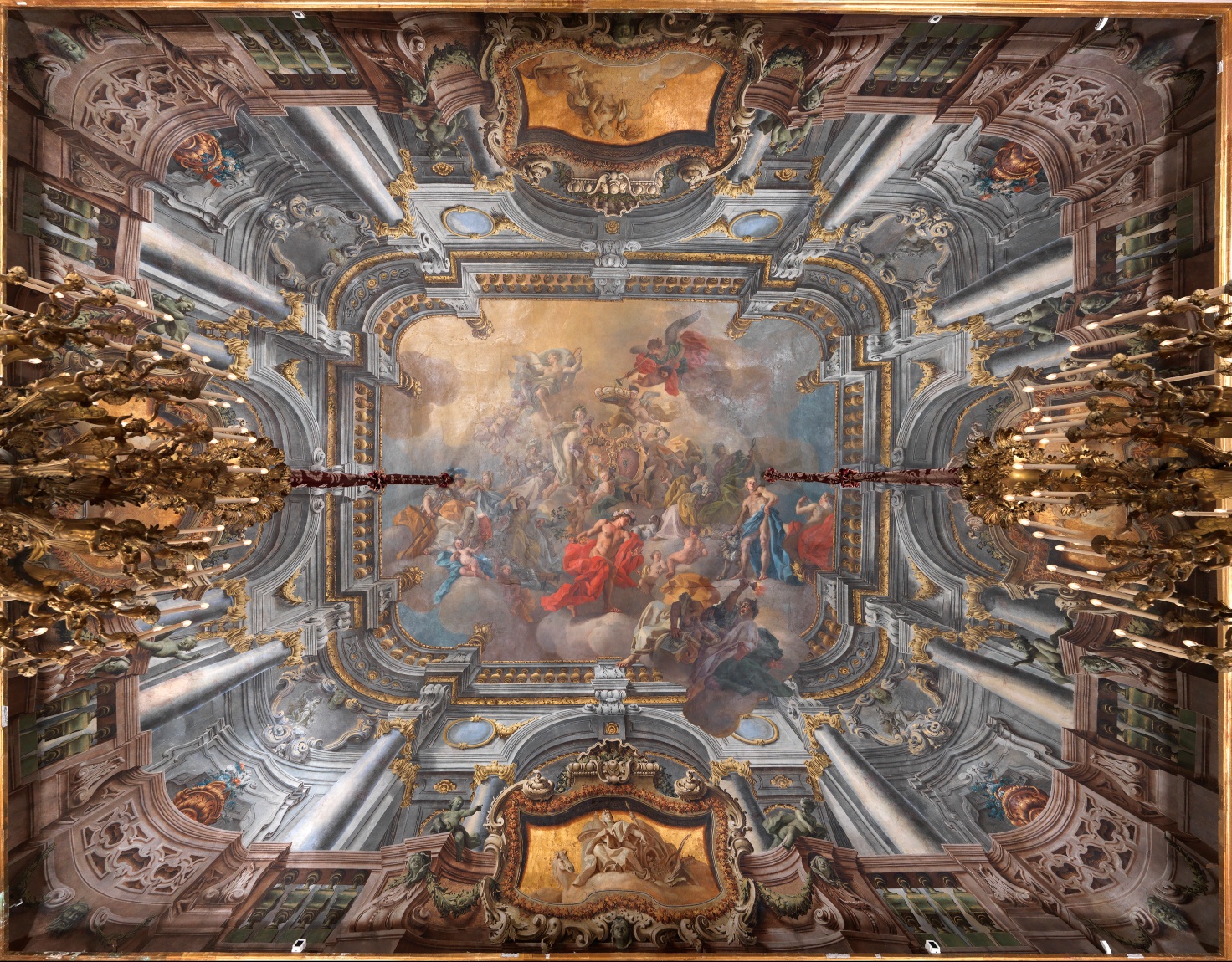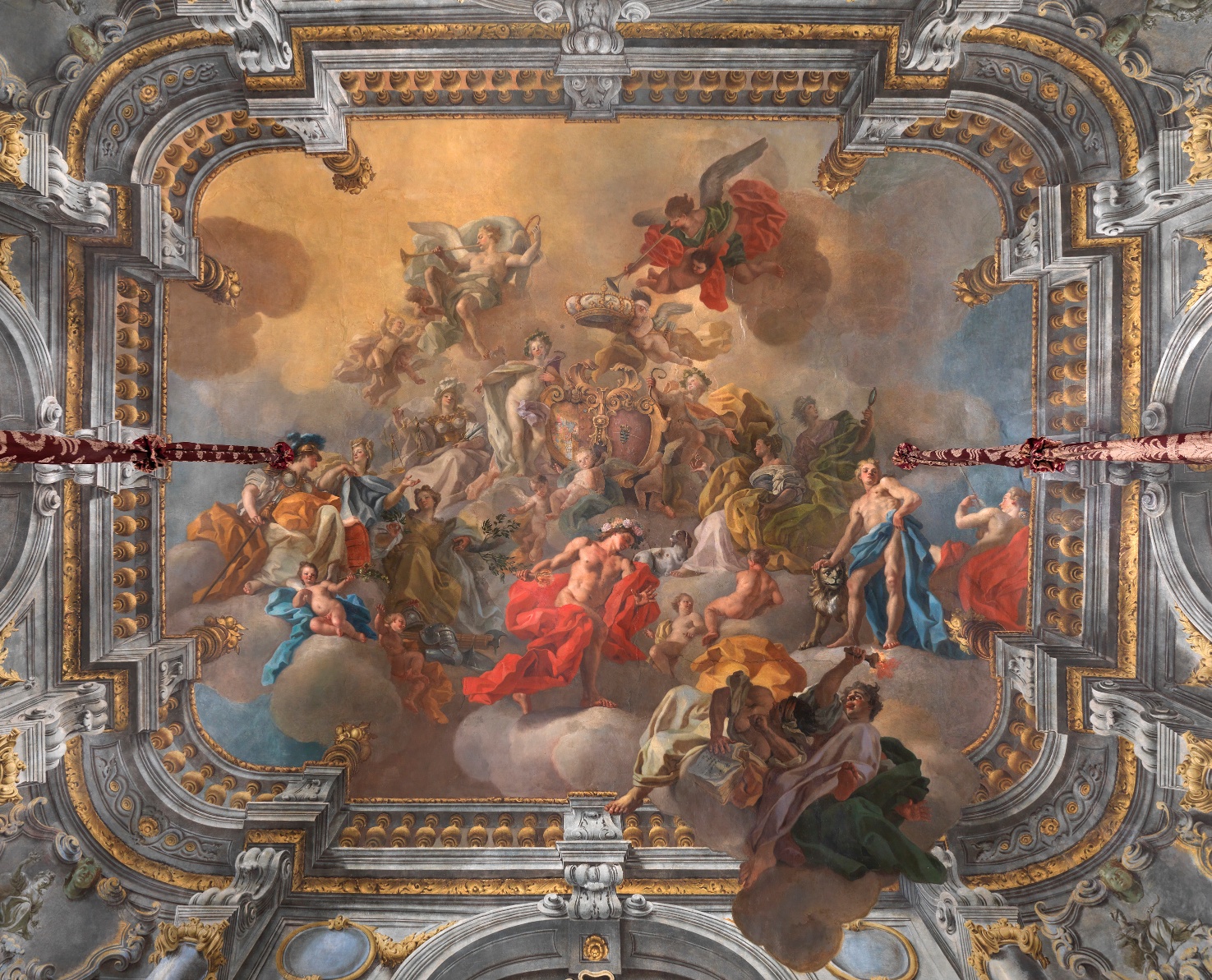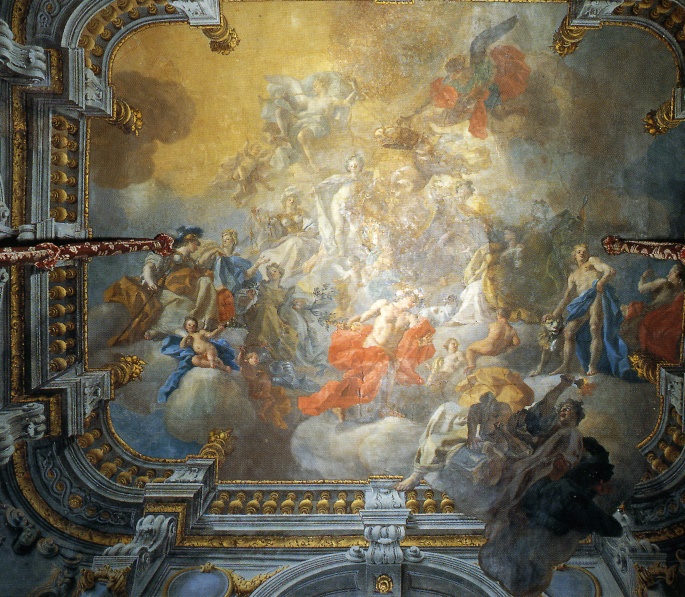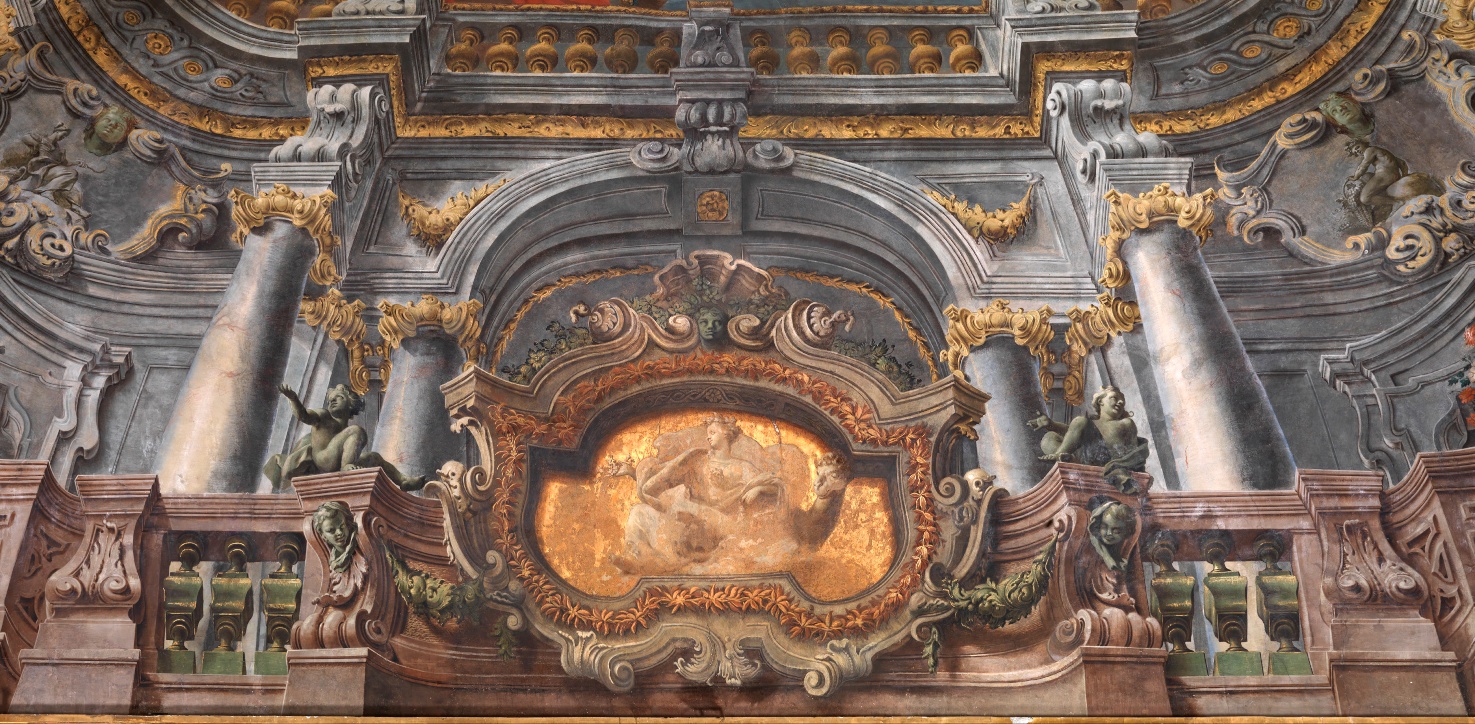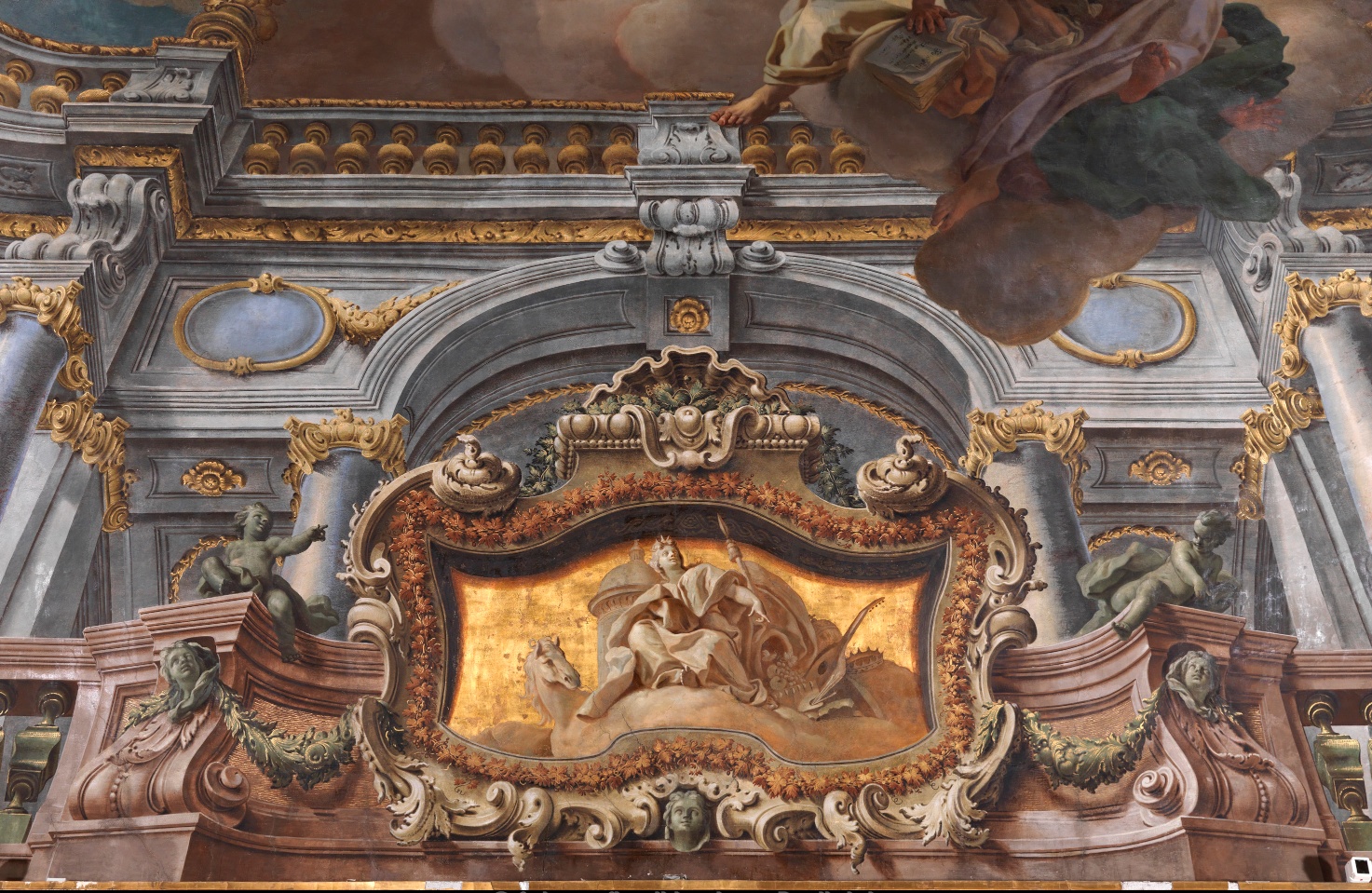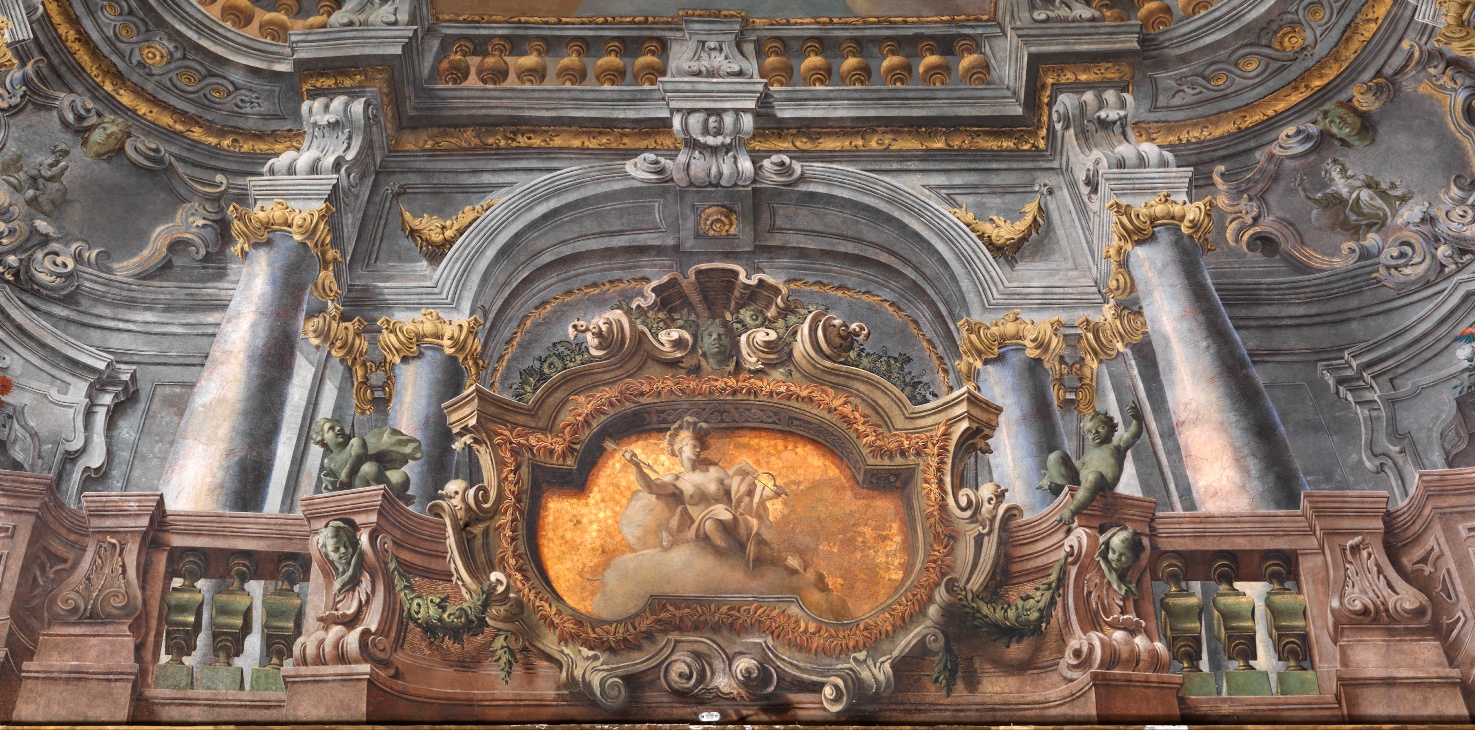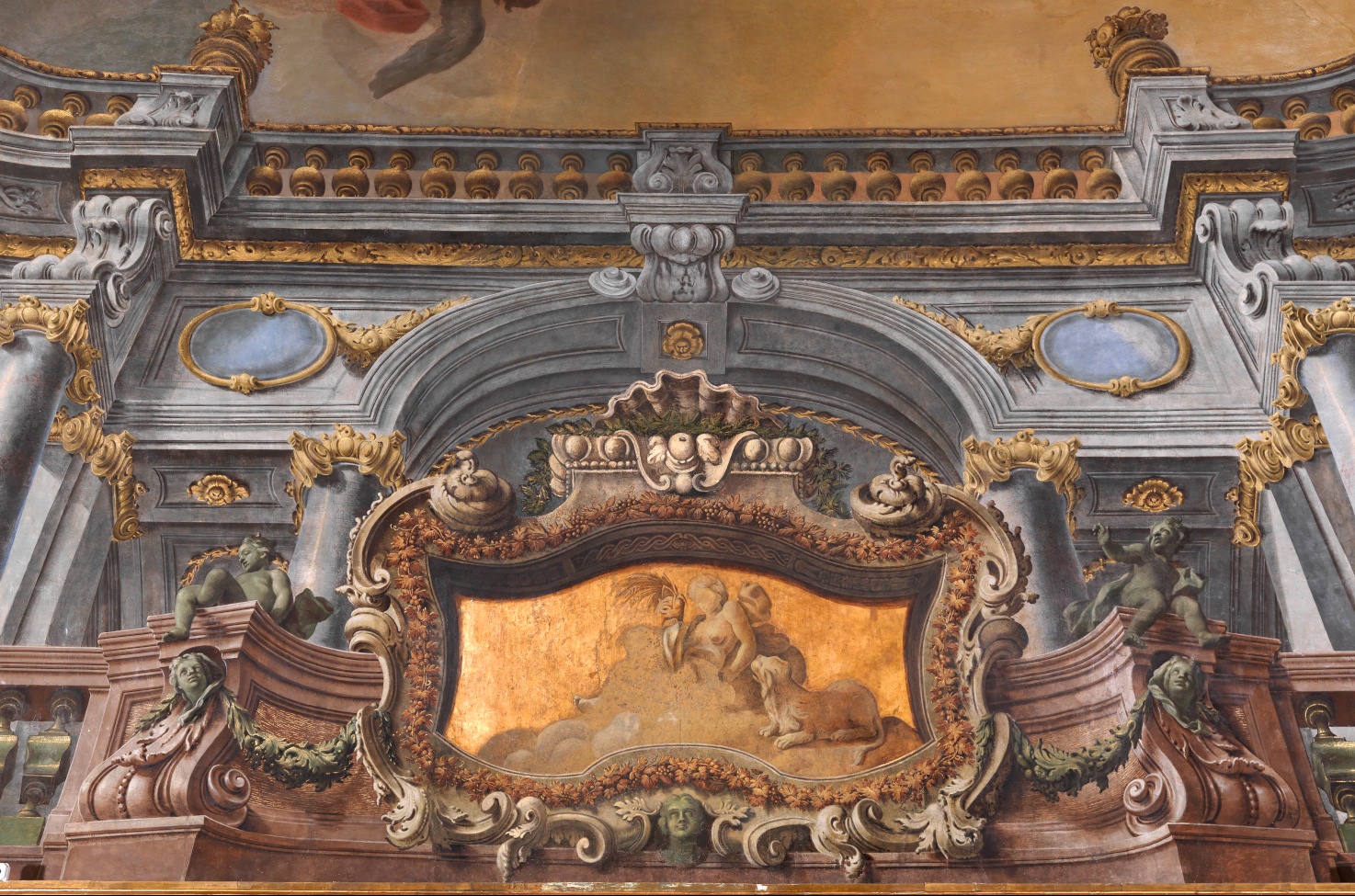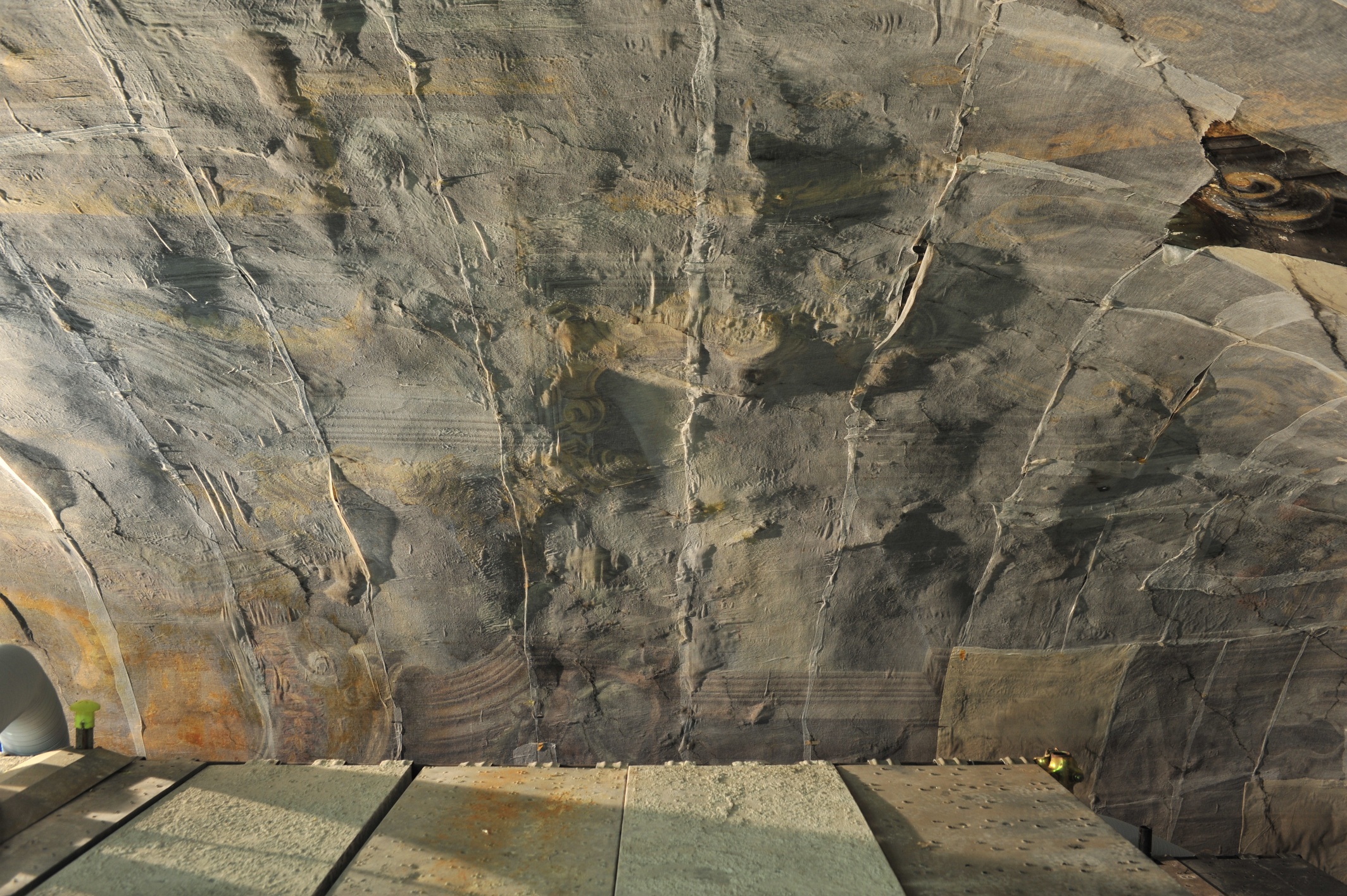Naples, Royal Palace, vault of the Diplomatic Room, painting by Francesco De Mura
Date
Wednesday June 29th, 2016
DATA SHEET
AUTHOR:
Francesco De Mura, Vincenzo Re
DATING:
1738
LOCATION:
Naples, Royal Palace, Diplomatic Room
CUSTOMER:
Superintendence for the Environmental, Architectural, Landscape, Historical, Artistic and demo-anthropological heritages, Naples – Dr. Patrizia May, arch. Donato Calicchio
PERIOD OF INTERVENTION:
March, 2011
THE PROBLEM
In 1738, Francesco De Mura painted in oil “The virtues of Charles and Maria Amalia” on the ceiling of the Diplomatic Room, on a fake lathing vault, during the wedding of Charles and Maria Amalia. The whole scene is inserted within perspective riquadratures , painted with dry lime and glue painting, due to scenographer of Court Vincenzo Re, active in Naples from 1737 to 1762.
The wooden support lathing structure and the lathing vault itself, over the centuries had many problems due to movements and settling of the building and to water infiltrations, which caused the collapse of several portions of the decorated plaster.
Copious restoration projects have been carried out to strengthen and replenish collapses, the least of which was in the early 80s as a result of the 1981 earthquake.
During the early 90s, to solve further more static problems and to operate on the extrados with the construction of a reinforced concrete garret above, the whole painted surface was protected with velatino gauze and acrylic resin solution, moreover, the ceiling was porpped up by placing fiberglass sheets and wooden planks between the paint and the surface.
This protection system has remained until our intervention in 2011.
THE METHOD
The work involved the restoration of the paintings of the vault, in addition to a revision , cleaning and disinfection intervention of lathing mat in the background.
In addition to the preliminary steps of removing protections and gauzes from the painting film, the intervention included a conservative restoration work, a restoration of contact and cohesion of the painting film and the preparatory layers; similar operations were conducted both on the paintings in tempera and on paintings in oil.
Very different were the cleaning and pictorial reintegration cause of the two executive techniques, methodologies and materials used. In these phases, the painting in oil has been treated with the same methods used for the easel works: cleaning with organic solvents, reintegration with watercolors and varnish, final painting with acrylic matte varnish. Instead, the architectural decorations, painted in tempera, were cleaned with acetone, in order to remove the reisdual acrylic resin used for velinatura, plastered with slaked lime and marble dust, then retouched with watercolors.
Large blanks, partially reintegrated in previous interventions, have been retained and “refreshed” in pictorial text using the highly detailed photographic documentation found into Alinari archives .
